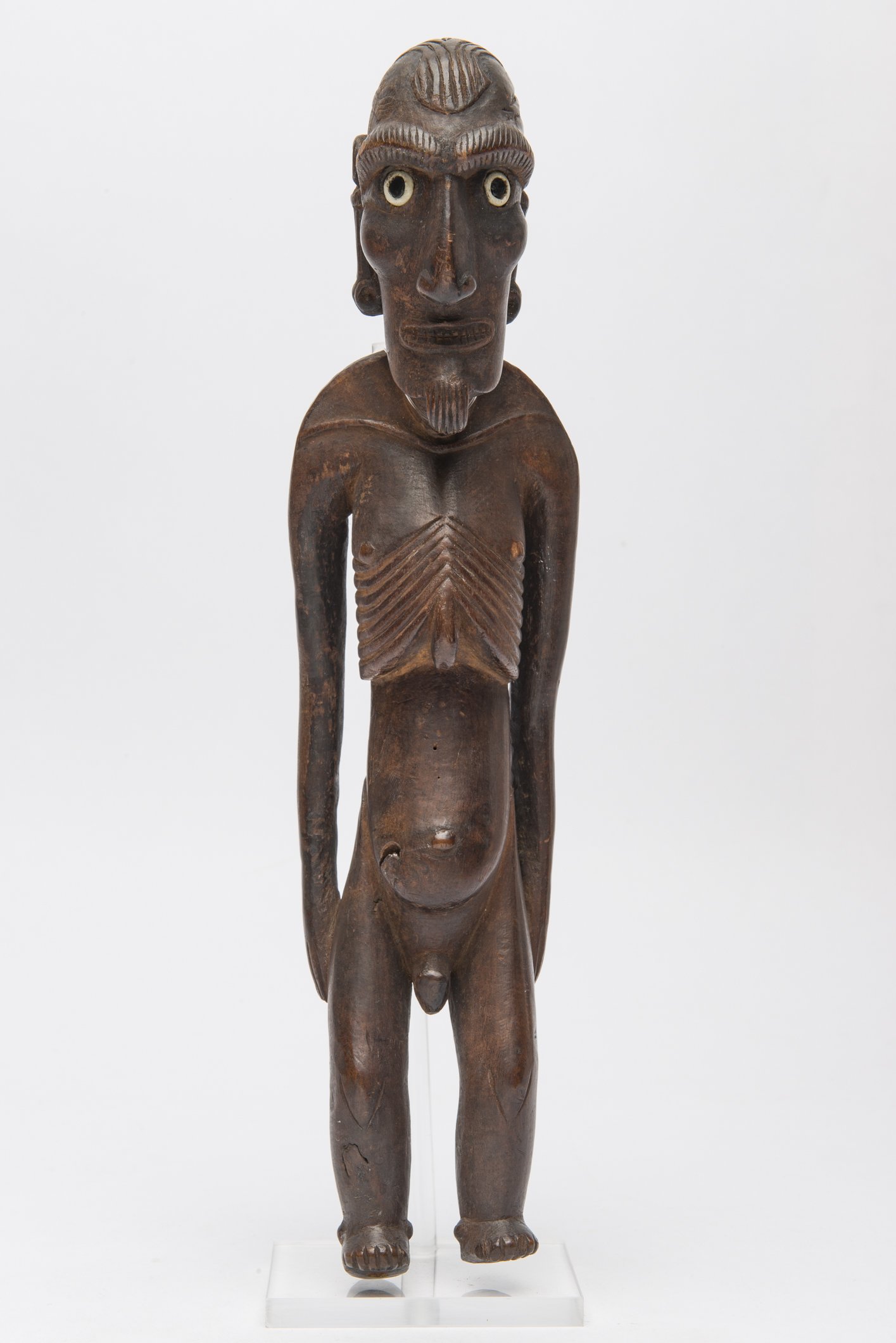Male, emaciated-looking wooden figure with bulging, skeletonized chest. The oversized, narrow head is slightly tilted forward. The face is dominated by the long narrow curved nose. The lips are slightly open, revealing the teeth. The eyebrows protrude, and the eyes are made of inlaid bone rings with obsidian discs in them for the pupils. The sharp chin is adorned with a goatee. The earlobes hang down and show round ear plugs as ear ornaments. On the head are notches (head glyph).
Long arms, slightly bent at the elbow, hang down from the shoulders at the sides. The hands with incised fingers are not fully sculpted, but the knuckles are. The ribcage with its pronounced ribs ends in the middle with the sword process protruding far above the abdomen. The shoulders have a ridge in front of and behind the neck. The nipples are elaborated. The navel is marked on the bulging belly. The penis is without scrotum. The legs are short and stocky in proportion to the body and arms. Slightly bent at the knee, the legs end in small feet that have not been fully sculpted, but the ankles have. The knees both feature an incised V. On the back, the spine with individual vertebrae strongly emerges. Such figures are among the most famous carvings of Easter Island. The figure represents a spirit being called akuaku. The akuaku are probably ancestral spirits that could be dangerous for members of foreign groups and protected their own descendants - as long as they respected them. During ceremonies, the figures were placed or danced with. They were worn around the neck during great ceremonies.Afterwards, they were wrapped in bark bast and kept in dwellings or cult centers.
de

